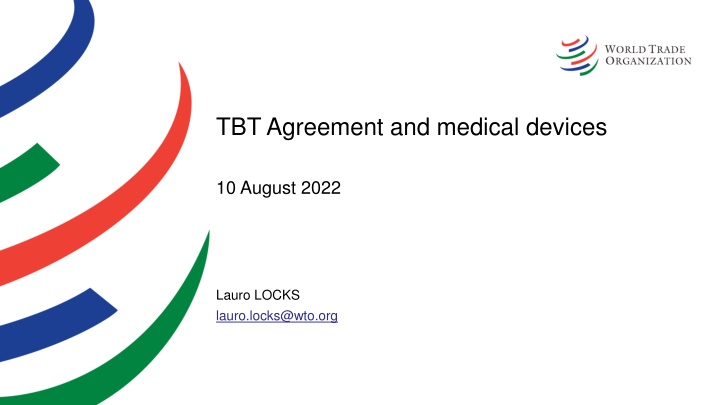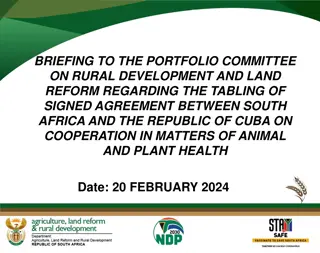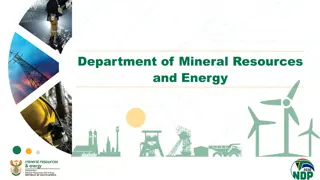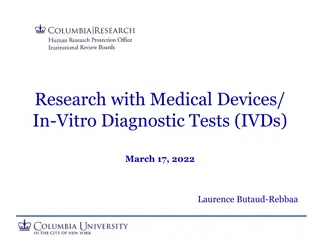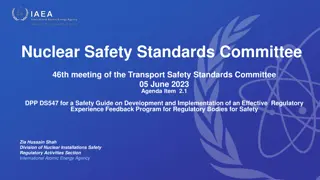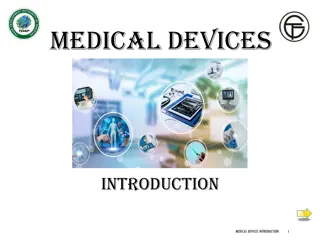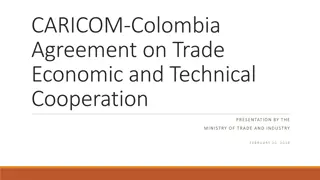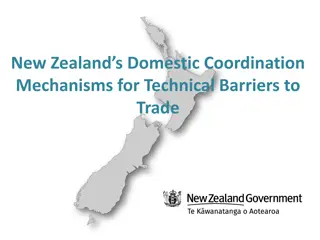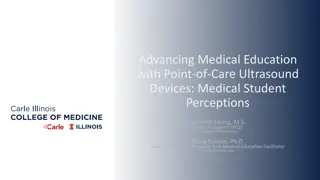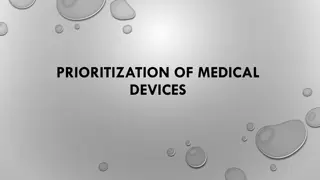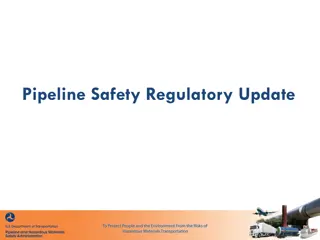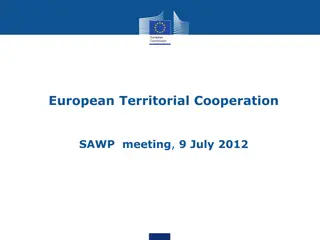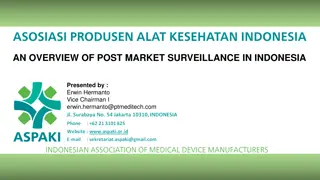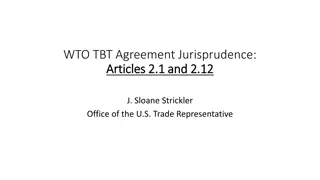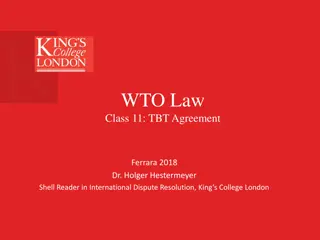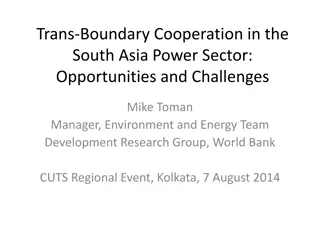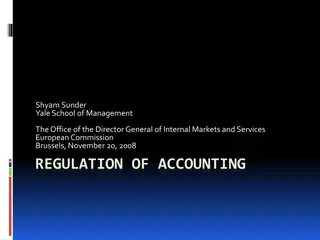Enhancing Regulatory Cooperation for Medical Devices under the TBT Agreement
Regulatory cooperation and reliance on international standards play a crucial role in facilitating access to essential medical products. The TBT Agreement emphasizes the use of international standards, conformity assessment procedures, and transparency to address trade and regulatory bottlenecks. By promoting cooperation and harmonization among regulators and manufacturers, countries can streamline processes, enhance efficiency, and ultimately improve both health outcomes and trade relationships.
Download Presentation

Please find below an Image/Link to download the presentation.
The content on the website is provided AS IS for your information and personal use only. It may not be sold, licensed, or shared on other websites without obtaining consent from the author.If you encounter any issues during the download, it is possible that the publisher has removed the file from their server.
You are allowed to download the files provided on this website for personal or commercial use, subject to the condition that they are used lawfully. All files are the property of their respective owners.
The content on the website is provided AS IS for your information and personal use only. It may not be sold, licensed, or shared on other websites without obtaining consent from the author.
E N D
Presentation Transcript
TBT Agreement and medical devices 10 August 2022 Lauro LOCKS lauro.locks@wto.org
Outline 1. Trade and regulatory cooperation are vital for expediting access to essential medical products. 2. Core TBT obligations of relevance to NRAs: 1. International standards 2. Facilitating conformity assessment procedures 3. Transparency 3. The WTO TBT Committee can help find cooperative solutions to trade and regulatory bottlenecks. 1
Regulatory cooperation and trade Regulatory cooperation and reliance avoids duplication and promotes more efficient use of resources by regulators and manufacturers Narrowing unnecessary differences in regulation between countries has benefits for both health and trade (e.g. expediting registration, facilitating operation of supply chains) Cooperation is especially important for NRAs with less resources to contend with increasingly complex technologies embedded in medical devices Strengthening use of good regulatory practices (such as transparency, public consultation, and internal coordination) enables these efforts 2
International Standards TBT Agreement National Standards and Regulations International Trade
TBT Agreement: using international standards Members shalluse technical regulations (Art. 2.4) conformity assessment procedures (Art. 5.4) relevant international standards Also: national standards as a basis for when ineffective or inappropriate for policy objectives except! (e.g. fundamental climatic or geographical factors, or technological problems)
Facilitating conformity assessment procedures 6
Facilitating certification/registration (encouraged in TBT Agreement) International or regional systems for conformity assessment (article 9) Members shall, wherever practicable, formulate and adopt international systems for conformity assessment Recognition of foreign conformity assessment results (article 6) verified compliance, for instance through accreditation, with relevant guides or recommendations issued by international standardizing bodies shall be taken into account as an indication of adequate technical competence Encouragement to negotiate MRAs
WHATTONOTIFY? New or modified technical regulation or conformity assessment procedure + No existing international standard or Different from the international standard + Significant impact on trade (restricting or facilitating) NOTIFY 9
Some examples of notifications Peru adopted Guidelines for the manufacture of reusable cloth face- masks for use by the community (G/TBT/N/PER/131) (06/05/2021) 11
Mexico laid out minimum requirements for the design, development, manufacture, warehousing and distribution of medical devices, based on level of risk (G/TBT/N/MEX/454) (21/06/2019) 12
Recognizing certification by others: regulatory cooperation Instead of conducting its own inspections of pharmaceuticals and medical device manufacturers, Brazil is accepting information from other regulators that participate in the Pharmaceutical Inspection Co- operation Scheme (PIC/S) and the Medical Device Single Audit Program (MDSAP). (G/TBT/N/BRA/984)
Two main themes of Committee work 2 1 Information exchange on cross- cutting issues (harmonization, transparency, ): leading to decisions and recommendations review of measures specific trade concerns (mostly based on notifications)
Examples of specific trade concerns (on agenda of March 2022 TBT Committee) EU Medical device regulation and In Vitro Diagnostic Medical Devices Regulation (STC No 594) Raised 8 times since June 2019 by Canada, China, Japan, Korea, Mexico, Singapore, US Issues include: insufficient number of conformity bodies accredited to certify and test medical devices insufficient number of implementing acts providing detailed guidance on compliance China Registration fees for drugs and medical device products (STC No 466) Raised 20 times since June 2015 by Australia, Canada, Korea, Malaysia, US Issues include: Lack of equal treatment between exporters and domestic producers in imposing registration fees due to fee for foreign inspection 17
Key messages 1. Trade and regulatory cooperation are vital for expediting access to essential medical products. 2. Core TBT obligations of relevance to NRAs: 1. International standards 2. Facilitating conformity assessment procedures 3. Transparency 3. The WTO TBT Committee can help find cooperative solutions to trade and regulatory bottlenecks. 18
